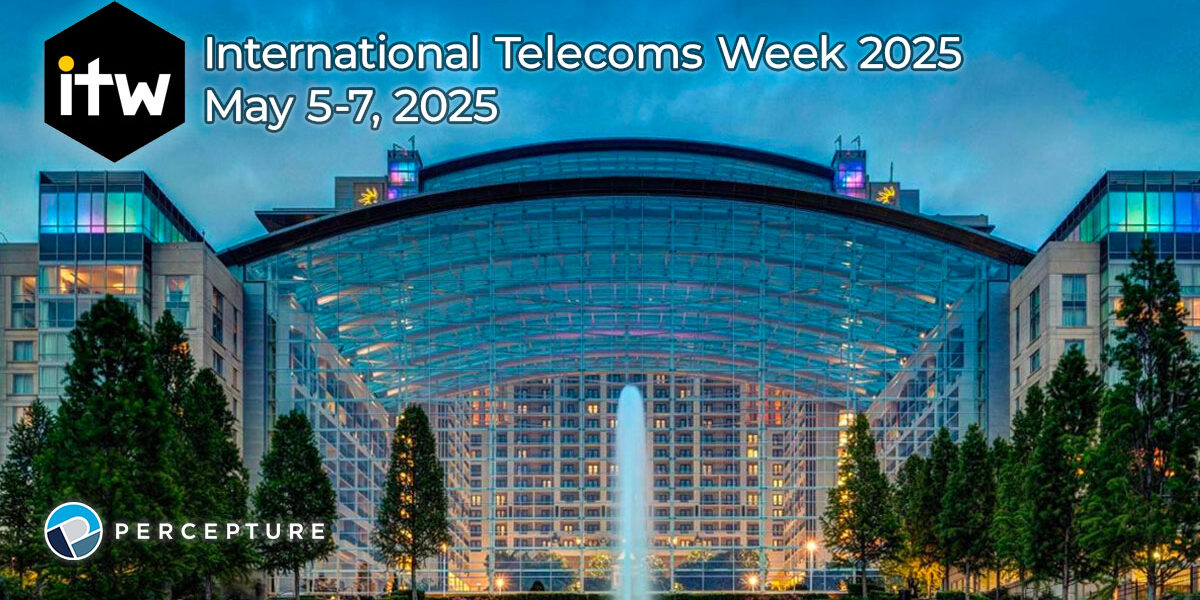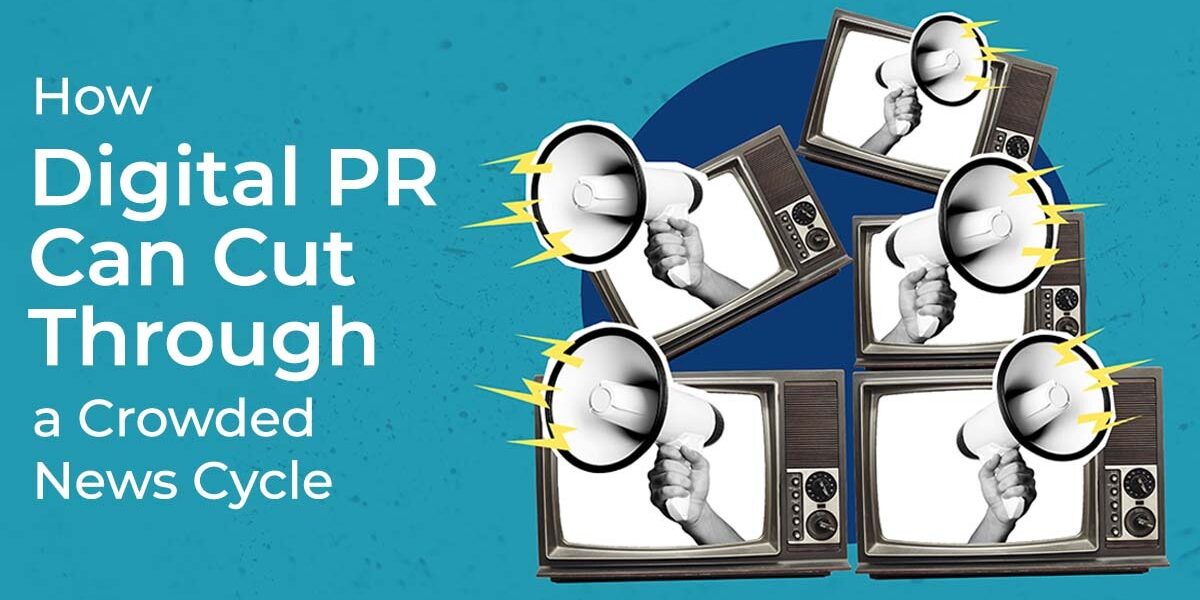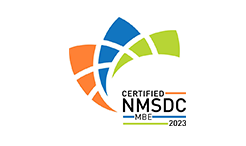- Companies in the B2B space should anticipate allocating approximately 10% of their revenue towards marketing in 2024.
- The marketing budget should be a mix of both digital and traditional approaches, with a suggested split of 50% for each.
- Within the digital budget, key areas of focus should be content strategy (40-50%), ad spend (30-40%), and other activities like social media, email marketing, and CRM (20-30%).
- Embracing an omnichannel strategy in both digital and traditional marketing is crucial for creating a seamless brand experience across all customer touchpoints.
As businesses evolve in the digital era, so does the art of budgeting. B2B companies preparing for 2024 need to understand this dynamic environment to make strategic budgeting decisions. This article offers an analysis of industry insights, trends, benchmarks and effective strategies to answer the crucial question, “How much should my B2B marketing budget be for next year?”
B2B Marketing Budget Allocation Starting with Industry Benchmarks
The common practice among B2B companies is to allocate around 10% of their revenue to their marketing budget. However, it’s not just about setting a budget; it’s about the smart allocation of that budget across various marketing channels. Most organizations somewhat evenly divide their budget between digital and non-digital marketing efforts.
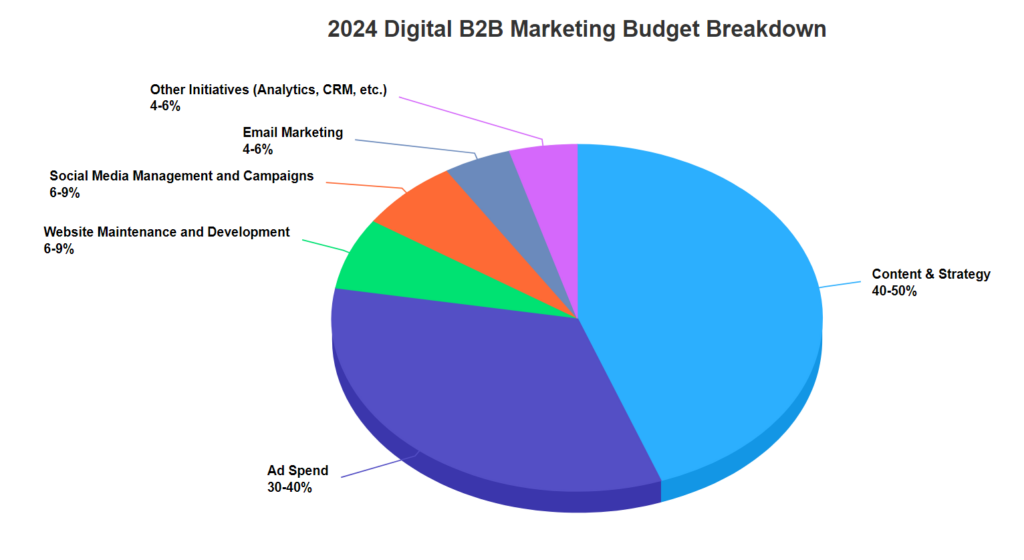
Exploring the Digital Budget
Within the digital budget, about 40-50% should be dedicated to content development, planning, and strategy. This sector forms the crux of your digital marketing efforts, encompassing activities such as blog writing, video production, Enterprise SEO, and overall strategic planning.
Around 30-40% of the digital budget typically goes into ad spend. However, this isn’t uniformly distributed across all platforms. Most businesses, especially in the B2B realm, tend to favor LinkedIn and Google Ads for their ad spend, with programmatic advertising also forming an integral part.
LinkedIn, with its professional and business-centric audience, usually consumes 35-40% of the total ad spend. On the other hand, Google Ads, including Google Remarketing, accounts for 30-60% of the ad spend, with its broad reach and precise targeting capabilities.
Programmatic advertising, a tool that automates the buying and selling of online advertising, should account for around 15-20% of the ad spend. When leveraged with AI, as Percepture does, it can enhance the reach and impressions of your campaigns, increasing overall touchpoints with potential customers.
Website maintenance and development consumes about 6-9% of the digital budget, providing a dynamic and user-friendly experience for visitors. Social media management and campaigns, critical for brand awareness and engagement, account for a similar share. Email marketing initiatives and other activities like analytics and CRM require around 4-6% each.
Why Embracing an Omnichannel Marketing Strategy is Imperative for 2024
While digital marketing is a critical focus area, the importance of an omnichannel approach within the digital realm can’t be overstated. In today’s interconnected world, your customers interact with your brand across multiple platforms and devices. Be it social media, email marketing, search engines, or programmatic advertising, an integrated digital strategy is key to creating a seamless and consistent brand experience.
Furthermore, integrating digital marketing with traditional (non-digital) strategies ensures a comprehensive brand presence. Traditional marketing channels such as print, radio, TV advertising, direct mail, and event participation sponsorship continue to provide valuable touchpoints for audience engagement. They also offer the added benefit of building community connections and creating memorable, tangible brand experiences. In essence, a successful B2B marketing strategy in 2024 must embrace the synergies between digital and non-digital channels, and leverage an omnichannel approach for maximum impact.
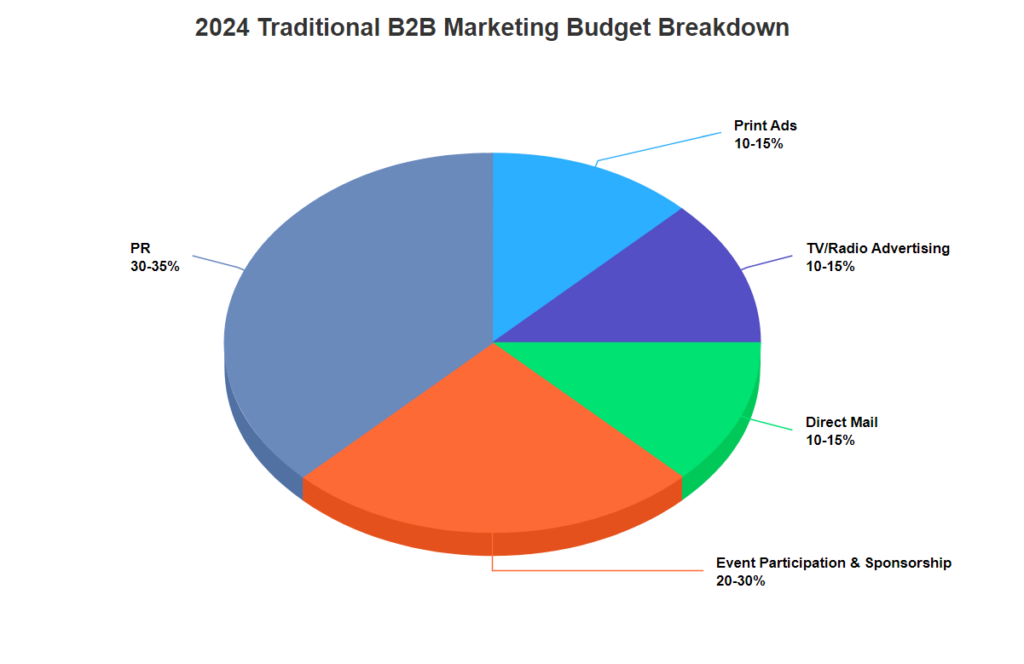
Visualizing Your 2024 Marketing Budget: A Sample Breakdown
Let’s consider a B2B company with $10 million in annual revenue:
Total Marketing Budget: $1,000,000 (10% of revenue)
- Digital Marketing : $500,000 (50% of the budget)
- Content & Strategy: $200,000 – $250,000 (40-50% of digital budget)
- Ad Spend: $150,000 – $200,000 (30-40% of digital budget)
- LinkedIn: $52,500 – $80,000 (~35-40% of ad spend)
- Google Ads: $45,000 – $90,000 (~30-60% of ad spend)
- Programmatic Ads: $22,500 – $30,000 (~15-20% of ad spend)
- Website Maintenance and Development: $30,000 – $45,000 (~6-9% of digital budget)
- Social Media Management and Campaigns: $30,000 – $45,000 (~6-9% of digital budget)
- Email Marketing: $20,000 – $30,000 (~4-6% of digital budget)
- Other Initiatives (Analytics, CRM, etc.): $20,000 – $30,000 (~4-6% of digital budget)
- Traditional Marketing: $500,000 (50% of the budget)
- Print Ads: $50,000 – $75,000 (~10-15% of traditional budget)
- TV/Radio Advertising: $50,000 – $75,000 (~10-15% of traditional budget)
- Direct Mail: $50,000 – $75,000 (~10-15% of traditional budget)
- Event Participation & Sponsorship: $100,000 – $150,000 (~20-30% of traditional budget)
- PR: $150,000 – $175,000 (~30-35% of traditional budget)
While these figures provide a guideline, remember that these are estimates. The exact numbers will depend on your specific business model, industry, target audience, and marketing objectives. Regularly revisit and revise your budget allocations to stay agile and responsive to market trends.
In Conclusion
Crafting a B2B marketing budget for 2024 demands a careful balance between tradition and innovation. By understanding the changing landscape, monitoring competitors, and focusing on an omnichannel approach, your business can create a robust, effective marketing budget that delivers growth in 2024 and beyond.
To put it in a nutshell, the road to a winning marketing budget starts with strategic planning, demands continuous adaptation, and ends with ROI-oriented spending. Are you ready to succeed in 2024?




